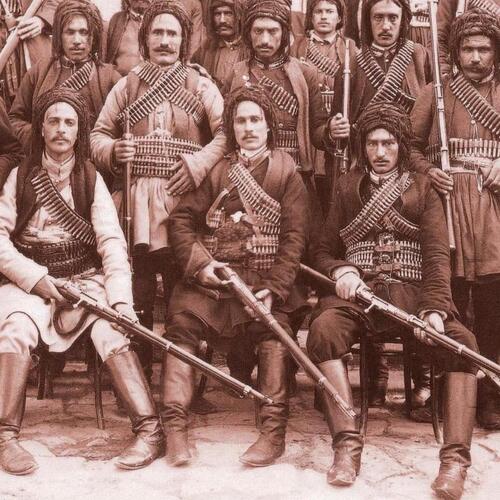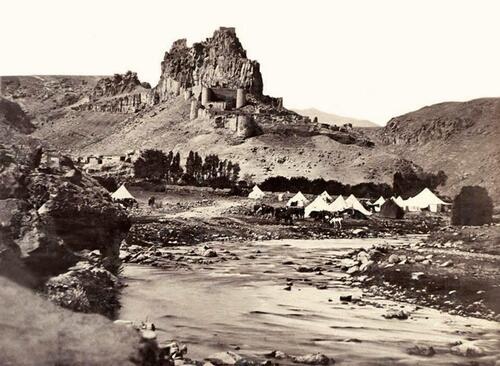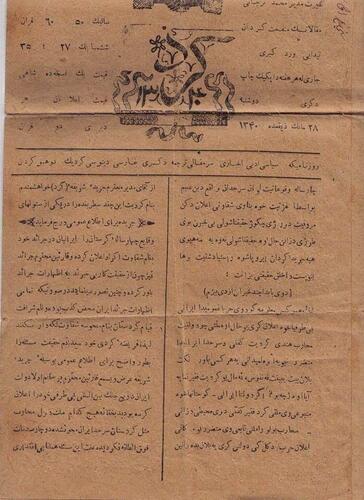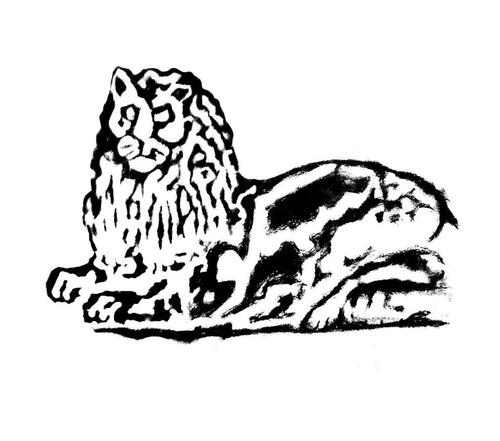Simko was born in 1887. After his elder brother Jawar Agha was deceived and killed by the governor of Tabriz in 1905, and his father Mohammad Agha disappeared by the Ottomans, he began to struggle in 1906 in Kotol, Maku, Khoy, and Salmas to strengthen his power.
In September 1912, when Abdulrazaq Badr Khan and Sayid Taha, grandson of Sheikh Obaidullah, were on their way from Tbilisi to their hometown, they were arrested by Turkish soldiers and taken to Turkey. However, when Simko knew of this incident attacked them and rescued Abdulrazaq and Sayid Taha on the border between Iran and Turkey after a short battle.
In early 1913, Simko established the World Society in Khoy City with the help of Abdulrazaq Badr Khan. In this context, a Kurdish school was opened in Khoy where several Kurdish teachers who came from the Caucasus taught 29-30 Kurdish children in Kurdish and Russian.

In late 1914, during World War I, according to the agreement between Iran and Russia, he was shot by Armenians near Jolfa while Russians exiled Simko to Tbilisi, but he was unharmed.
In 1916, when the Russians realized that there was a danger of occupation by the Ottomans without Simko in Khoy and Kotol, they released Simko and allowed him to return to Kotol.
In 1918, at the request of the Assyrian religious leader Marshimon, Simko Shikak went to Kohnashahr, near Salmas, from Chari for a meeting. During this meeting, Simko realized that Marshimon wanted to establish an Assyrian state in Kurdistan according to the promises he had been given by the Russians and that they had given him many weapons and ammunition. So, to defeat the plot, he killed Marshimon in the process of this meeting.

In a letter believed to be written in 1919 to General Hassan Muqaddam Zafar al-Dawla, a high-ranking Iranian official, Simko said, "Many of the world's smaller nations have their own states. If the Kurds cannot achieve autonomy with their large population, it is better to die than to exist."
In February 1919, the governor of Tabriz, Mukaram al-Mulk, prepared a bomb with the help of the Armenians of the area and sent it to Chari village to Khusrow son of Simko. It was sent as a gift from an Azerbaijani woman, who is said to be his relative, to kill Simko. As a result of the explosion, Simko's brother Alikhan and three others were killed and several others were injured.
Therefore, on July 17, 1920, Simko ordered Amar Khan Shikak, his advisor and commander-in-chief of the armed forces, to attack the enemy forces. After a heavy battle, Amar Khan was able to capture the port of Golmakhana and strategic places in Urmia and liberate the city from the enemy.

Battle of the Liberation of Mahabad
In 1921, Simko's forces killed more than 700 Iranian soldiers and captured the commander-in-chief of the force in the Mahabad barracks, Hassan Malekzadeh, and liberated the city from the invaders.
The Battle of Shakariaz
On December 17, 1921, the Iranian army with 5000 troops under the command of Amir Arshad Zargham Qaradaghi and a Swedish military advisor named Lindberg attacked Simko. Amir Arshad Zargham Qaradaghi was the brother of Mohammad Hussain Khan, who killed Simko's brother Jawar Agha in Tabriz in 1905. With Simko's order, Amar Khan Shikak, along with an armed force and 200 fighters, destroyed the enemy's positions and killed Amir Arshad.

In July 1922, Simko published the newspaper "Kurd" in Urmia, several issues of which were published in both Kurdish and Persian.
During his uprising, Simko had extensive contacts with most of the Kurdish tribal chiefs, intellectuals, and revolutionaries. In a letter, he addresses the Kurdish people:
“Kurds! We have no other way to save our nation from the enemy except unity and being together. We have no other solution to the powerlessness of our people except supporting each other. Take each other's hands honestly to defend yourselves with your strength and ability against the aggression of the enemy. This is the only way to escape and nothing else.”

On July 27, 1922, 15000 soldiers of the Reza Khan under the command of General Jahanbani attacked Chari Castle, Simko's place. In such a situation, Simko was forced to retreat from Chari Castle to the Shipiran area near the Turkey border.
On a night in October 1922, Turkish forces attacked the village of Shamane in the northern part of Kurdistan. As a result of this attack, Simko's wife, Mrs. Jawahir, was killed along with several others, and Simko's six-year-old son, Khusrow, was arrested.
On November 6, 1922, several British officials led by Cecil J. Edmonds met with Simko, Sayid Taha, and Simko's brother Ahmad Agha in the village of Bahrka near Erbil. During this meeting, Simko tried to win the support of the British, but the British officials gave him no promises of support.
On January 8, 1923, Simko went to Sulaimani to visit Sheikh Mahmoud, where he was warmly welcomed by Sheikh Mahmoud and the people of Sulaimani with an official ceremony and a large carnival.

The Chahriq Village and Castle
During his stay in Sulaimani, after several meetings with Sheikh Mahmud, Simko received no positive response from him to distance himself from the Turks and make an agreement with the British. Simko also lost hope of British support for his revolution against Iran. At that time, due to the resumption of the war between Sheikh Mahmud and the British, Simko realized that there was no point in staying in Sulaimani and his future was uncertain. Therefore, on March 23, 1923, he left Sulaimani and returned to the Rwanduz district.
After Simko became disappointed in the British and left Sulaimani for Rwanduz, Ozdemir, a high-ranking Turkish official, made some promises to Simko. The new Turkish government, in order to prevent the British from using Simko against them, as a temporary tactic, along with allowing Simko to enter Turkey and hand over some of his wealth, as well as the release of his son Khusrow, made many other promises.
However, after the Treaty of Lausanne was signed on July 24, 1923, and the struggle between Turkey and the British over the fate of Mosul was resolved, Simko could no longer stay in Turkey and returned to Dalampar Mountain on the borders of Iran, Iraq, and Turkey and settled down there.

In early 1924, after an agreement between Simko and the Iranian government, Simko returned to Iran and settled in the village of Howasne in the Soma region of Urmia.
In 1925, Simko welcomed Reza Khan when he came to Salmas, and when he saw Simko's forces, he was afraid and thought he had fallen into Simko's trap. In order to escape the danger, he quickly left Simko and said he would go to Kohnashahr at 4 p.m., come there, and let's talk together there. After Reza Khan left Simko, he said in a loud and sad voice:
"I should have killed him. From now on, whatever happens, I will deserve it. The day will surely come when Rzo (Reza Khan) will kill me."
In 1926, Simko attacked Salmas with 1500 soldiers but was unable to capture the city due to internal conflicts. He was defeated during the retreat in the Soma-Bradost region and was forced to retreat to Iraq and settle in the north of Rwanduz.
In 1928, Simko again made an agreement with the Turks, entered the Turkish border with his supporters, and settled in the Gawar region of the northern part of Kurdistan.
After Simko remained in a difficult situation in the borders of southern, northern, and eastern Kurdistan for two years, in the summer of 1930, Colonel Sadeq Khan Nowrozi sent him a letter through Teimur Shikak, a former fighter of Simko, asking him to come to Shino to meet Iran's top commander, General Hassan Moqadam.

Sadeq Khan Nowrozi with Simko and his friends - This photo was taken 24 hours before Simko's death in Shino
Simko honestly wanted to negotiate with the Iranian authorities to resolve their problems, but the Iranian government officials wanted to trap and kill him. Unfortunately, Simko was unaware of their conspiracy and easily fell into the trap of the enemy. He was assassinated on July 18, 1930, in Shino. Thus, the life of the legendary hero of Kurdistan ended, and his movement which lasted more than 20 years stopped.
Reza Shah thought that the Kurdish people's struggle in Iran would end forever with the killing of Simko, but in 1941, during World War II, Reza Shah's government ended, and the Kurdish people rose again, this time under the leadership of Peshawa Qazi Mohammad. In 1946, they established the Kurdistan Republic.

Special seal of Simko Shikak
Reference:
Book: Amarkhan Shikak, from the Rise of Simko to the Kurdistan Republic - by Mohammad Saleh Qaderi - 2021








